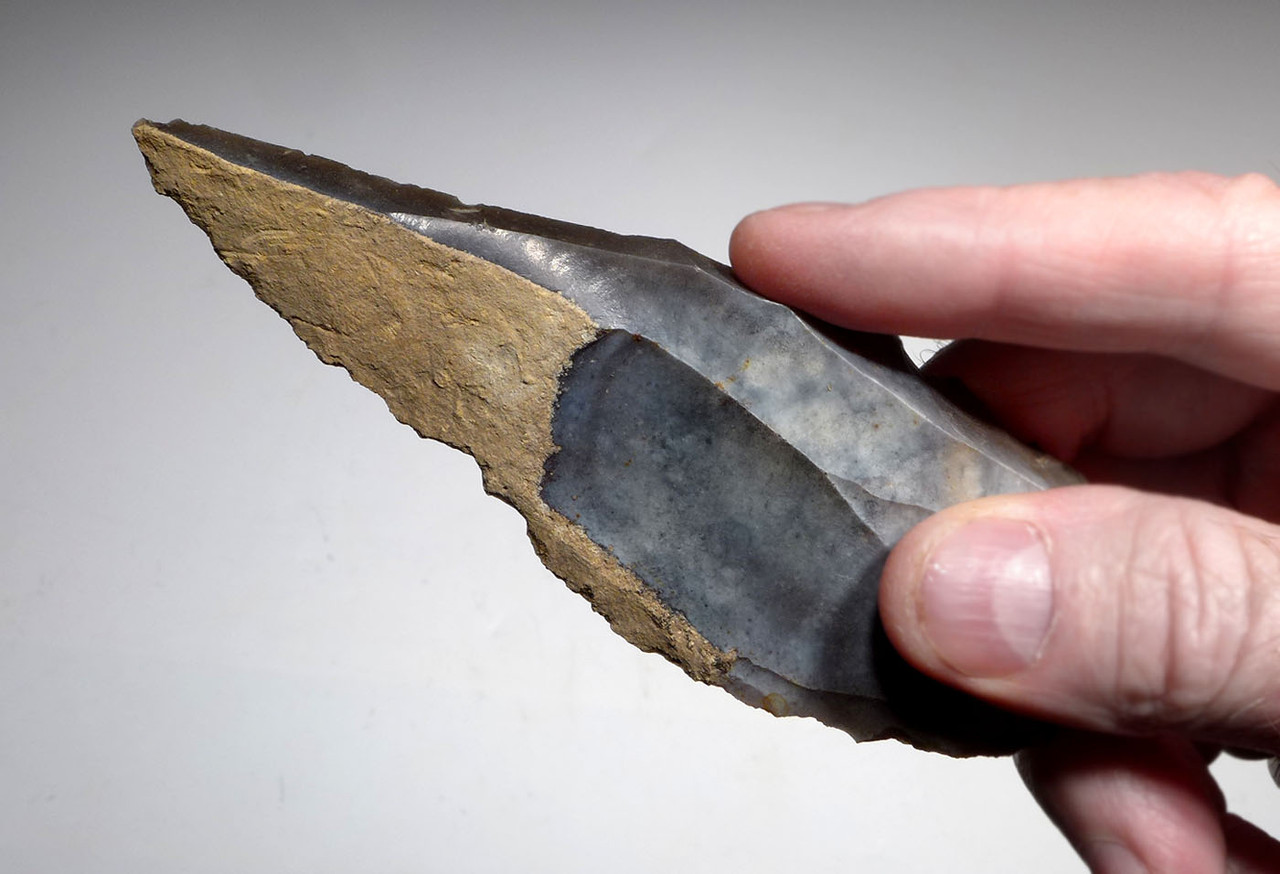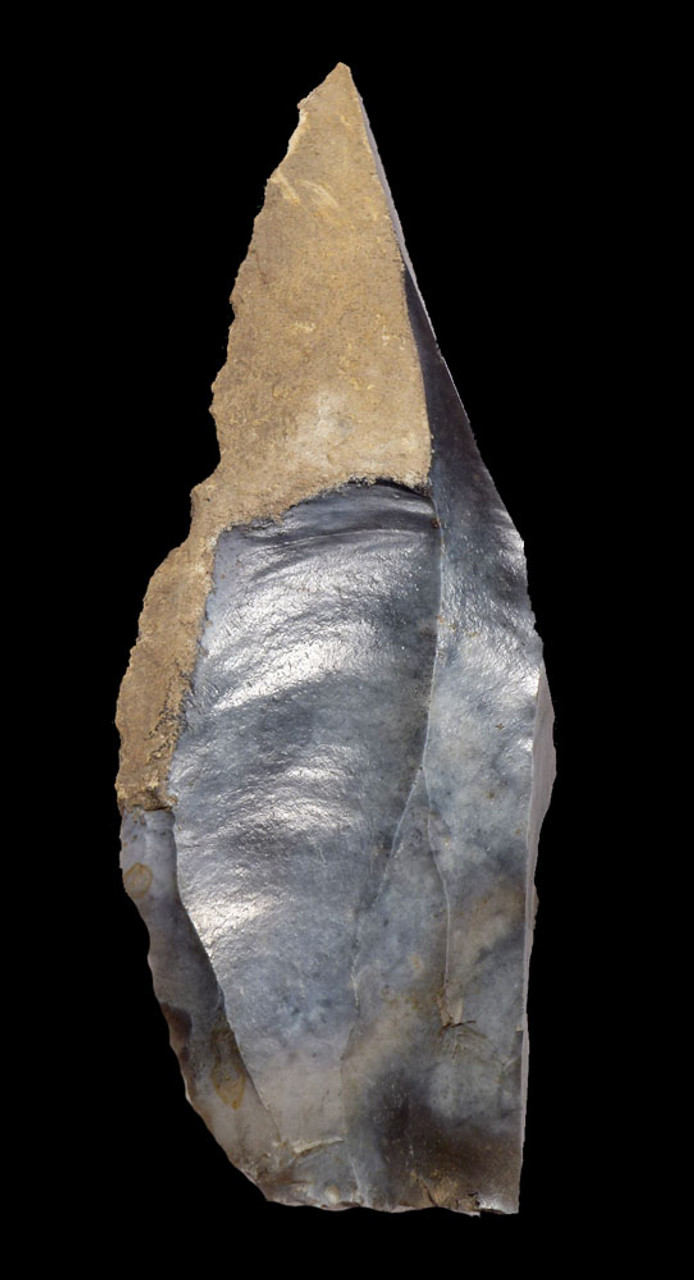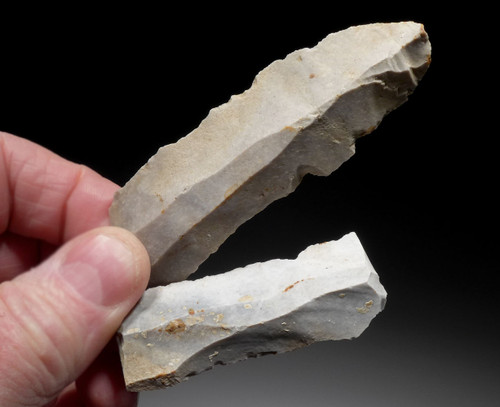Product Description
This SPECTACULAR Neolithic flint knife was collected near the world famous Spiennes Neolithic mining site of Belgium. It is one of the most beautiful and finest surface-collected flake tools we have ever encountered that has come out of this region. It is exceptionally large and it is so rare to not have sustained any damage considering nearly all of the large flint tools found in the crop fields of the area, are plow damaged. Furthermore, it sports an INCREDIBLE blue-white lustrous patina indicating it spent its time mostly underground and was discovered shortly after the plow unearthed it for the very first time, saving it from the destructive weathering most exposed flint undergoes.
Rare is the sharp point and masterfully executed flaking and shaping this complete knife exhibits. It is the finest Neolithic flake tool we have to offer from Spiennes and rivals anything that would come from the Danish Neolithic! Advanced collectors should NOT miss this rare opportunity to acquire a PRIZE specimen from an important part of human history and from a prominent Neolithic site in all of Europe!
HISTORY
The declaration in the year 2000 by UNESCO protecting the Neolithic flint mines at Spiennes was highlighted by three main criteria as quoted: "1) The Neolithic mines at Spiennes provide exceptional testimony to early human inventiveness and application, 2) The arrival of Neolithic cultures marked a major milestone in human cultural and technological development, which is vividly illustrated by the vast complex of ancient flint mines at Spiennes. 3) The flint mines at Spiennes are outstanding examples of Neolithic mining of flint, which marked a seminal stage of human technological and cultural progress."
These mines cover more than 250 acres and represent the largest and earliest concentration of ancient mines in Europe! A large diversity of methods were employed to extract the flint by open quarries, pits and networks of underground horizontal galleries. Vertical tunnels range from 30 to 40 feet deep. Shafts were sunk through the chalk layer vertically with galleries radiating out from the shafts. Unique to Spiennes, when the flint was exhausted above the bedrock, the rock layer was penetrated to reach the chalk layer below. This feature shows the mastery these Neolithic humans had of their local geology!
Mines were dug with only the aid of antler picks and bone shovels demonstrating an incredible feat based on the expansiveness of the site. Despite the miners' knowledge to leave pillars in the horizontal galleries for roof support, skeletons of workers have been found in collapsed shafts at Spiennes.
Flint tools from the mining site at Spiennes represent an icon of Neolithic technology, trade and culture. Every collection should have at least one tool from this official 'world-class' site.
 US DOLLAR
US DOLLAR
 EURO
EURO
 AUSTRALIAN DOLLAR
AUSTRALIAN DOLLAR
 CANADIAN DOLLAR
CANADIAN DOLLAR
 POUND STERLING
POUND STERLING


















